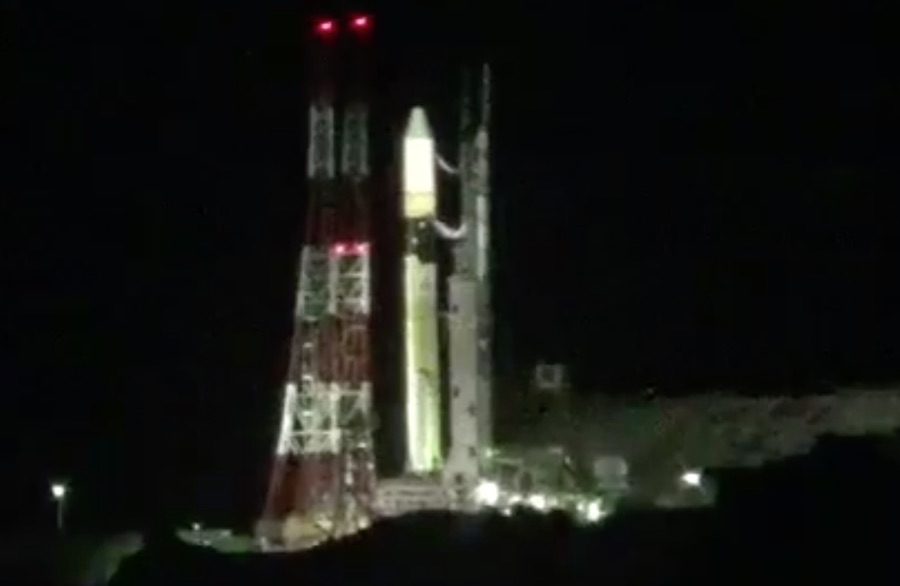
Japanese officials halted a countdown Monday at the Tanegashima Space Center when teams overseeing preparations for launch of an H-2A rocket detected a nitrogen gas leak, prompting the return of the launcher and its Japanese government payload to a nearby assembly building for repairs.
Mitsubishi Heavy Industries, which builds Japan’s H-2A rockets and oversees launch operations, tweeted that the countdown was stopped because of “facility trouble.”
Numerous other reports pointed to a leak in the nitrogen gas system that supplies conditioned air to the rocket.
Officials halted the countdown before super-cold liquid hydrogen and liquid oxygen propellants flowed into the rocket, and ground crews were able to transfer the H-2A launcher back into the Vehicle Assembly Building at Tanegashima within a few hours of discovering the problem.
The 174-foot-tall (53-meter) H-2A rocket rides a mobile launch platform between the assembly building and its launch pad. The two locations are separated by about a third of mile, or 500 meters, on the southern end of Tanegashima Island, located off Kyushu, the southernmost of Japan’s main islands.
The launch supposed to occur during a five-minute launch window opening at 0134 GMT Tuesday (8:34 p.m. EST Monday), or 10:34 a.m. Japan Standard Time. The H-2A was originally scheduled to take off a day earlier, but officials delayed the launch to Tuesday due to a poor weather forecast.
A new target launch date was not immediately announced by MHI or Japanese government officials, but the rocket’s return to its integration hangar suggests the delay will likely last multiple days.
The payload aboard the 41st flight of a Japanese H-2A rocket is the country’s newest intelligence-gathering reconnaissance satellite.
Japan’s government-owned orbiting robotic spy platforms are officially known as “Information Gathering Satellites” and come in radar and optical imaging variants. The spacecraft awaiting liftoff on the next H-2A flight — designated IGS Optical 7 — is the 18th Information Gathering Satellite launched by Japan’s government since 2003, including two satellites lost in an H-2A launch failure.
The spacecraft’s specifications, including its imaging performance, are kept secret by the Japanese government. The Information Gathering Satellites are operated by the Cabinet Satellite Intelligence Center, which reports directly to the Japanese government’s executive leadership.
The H-2A rocket with the IGS Optical 7 satellite will fly in the basic “202” configuration with two strap-on solid rocket boosters. Heavier satellites launching on the H-2A sometimes need four boosters to reach orbit.
Email the author.
Follow Stephen Clark on Twitter: @StephenClark1.



